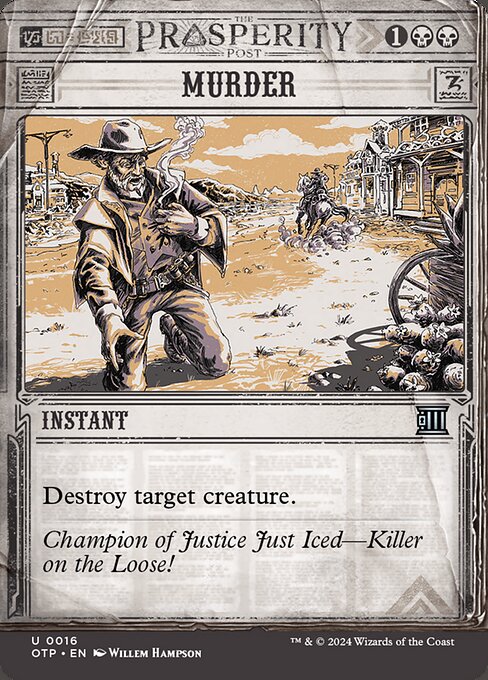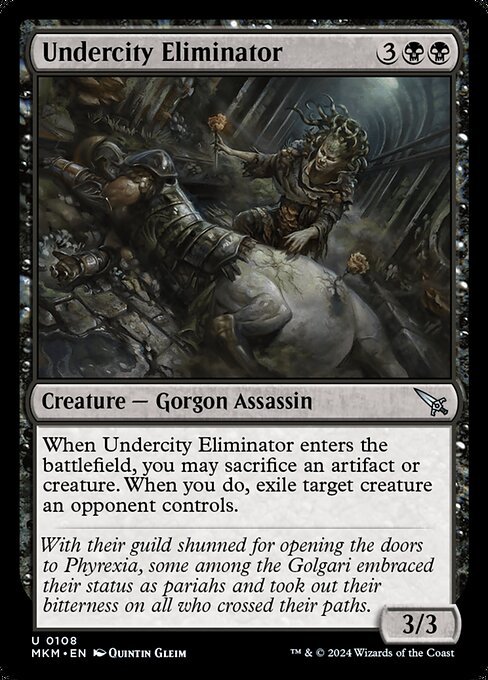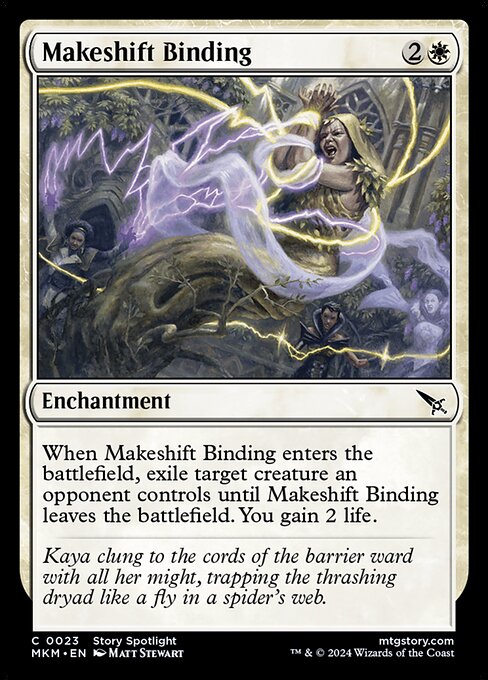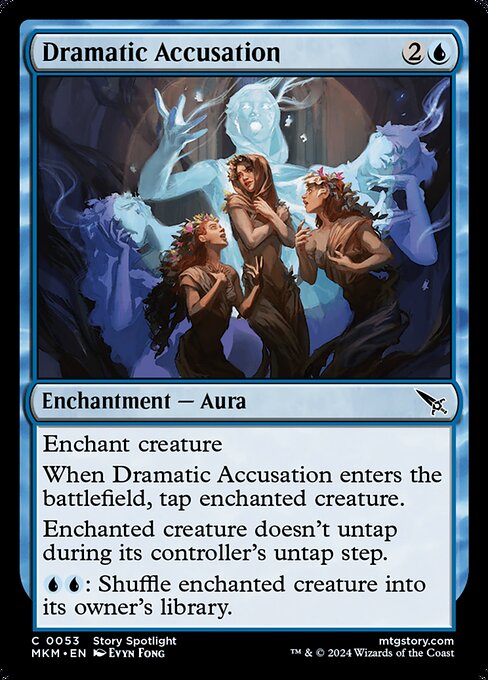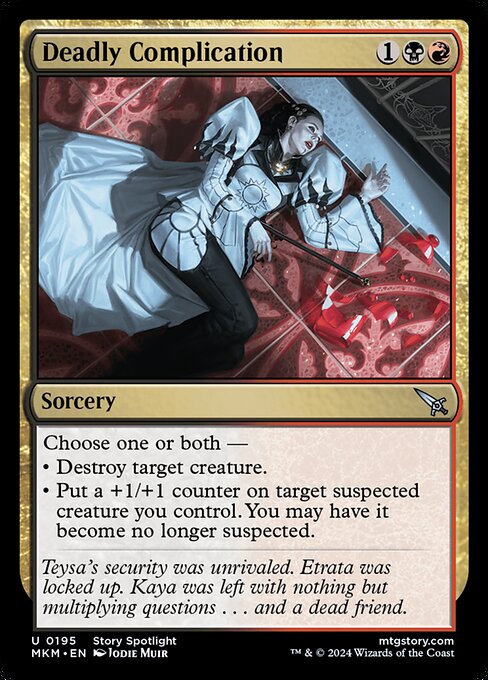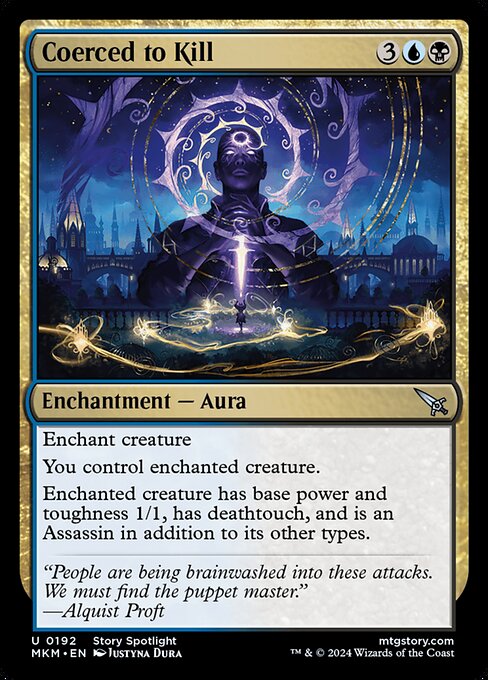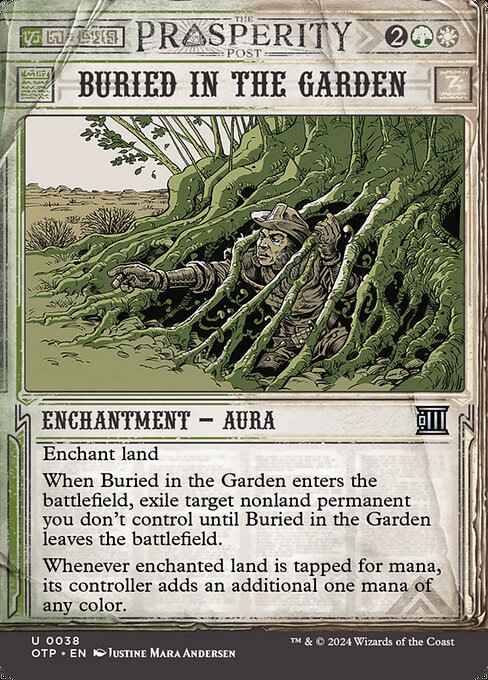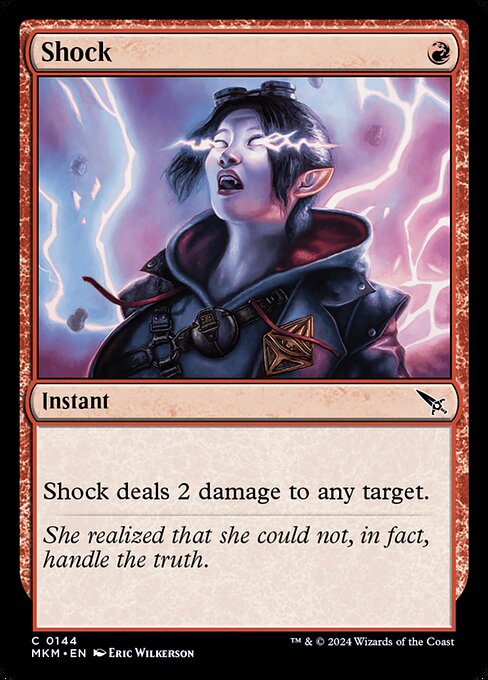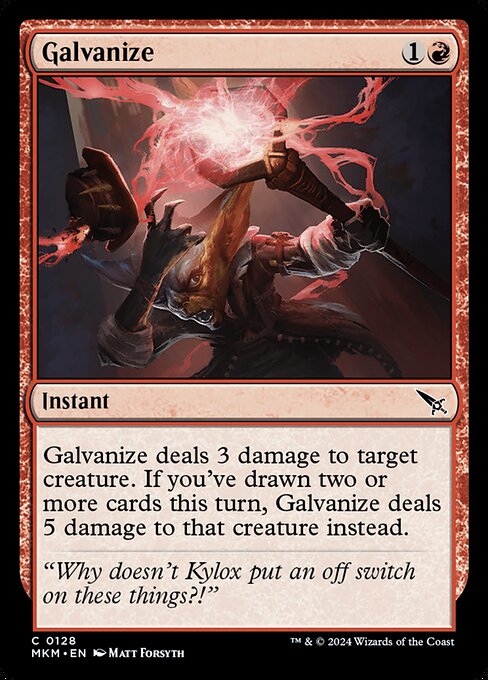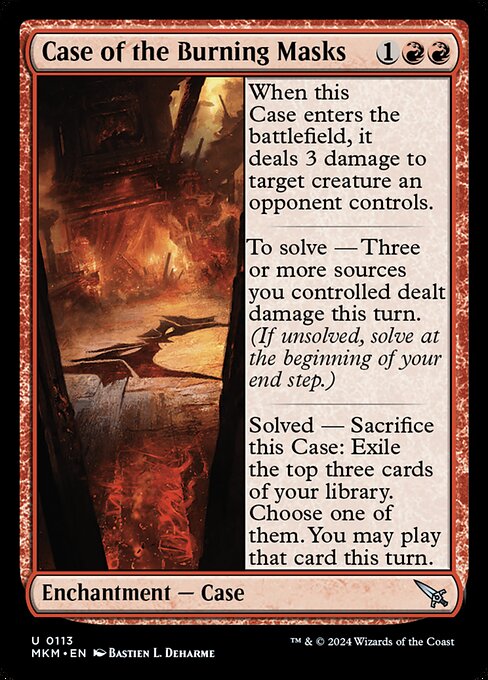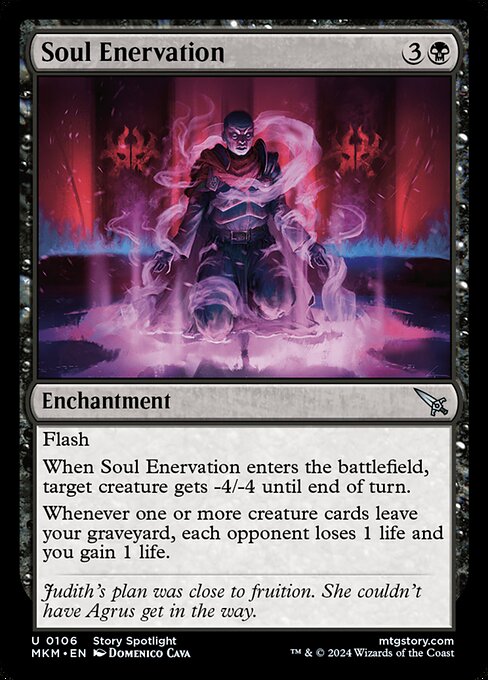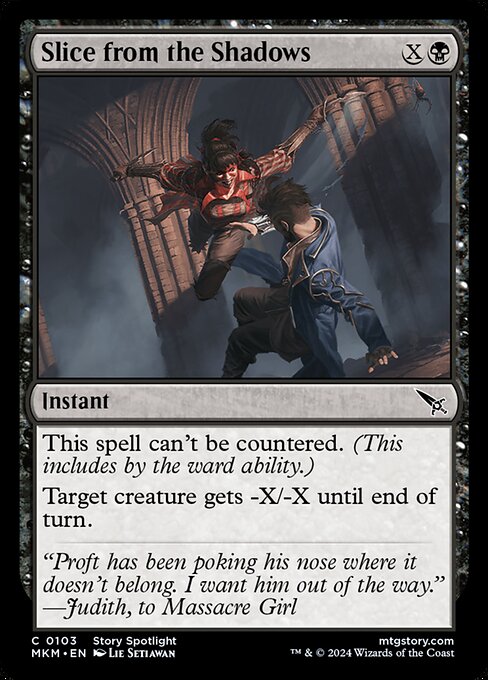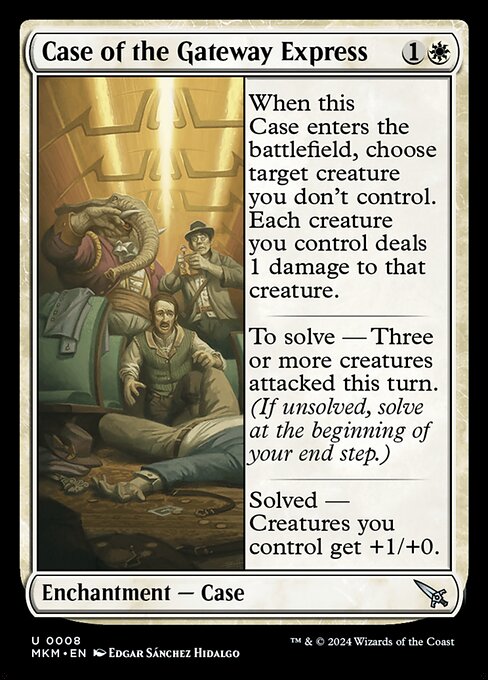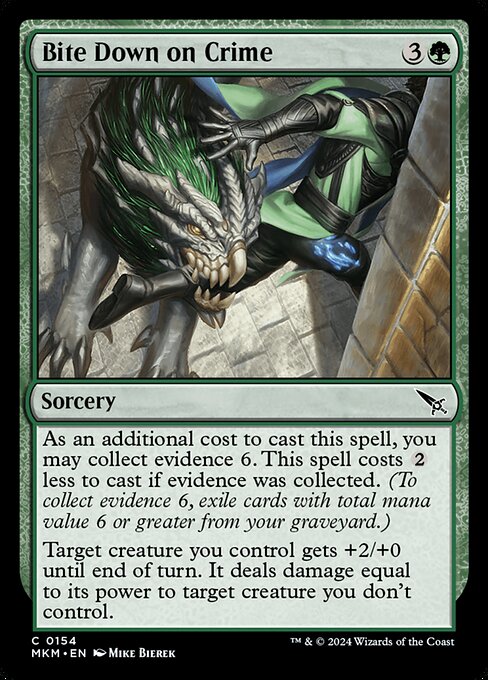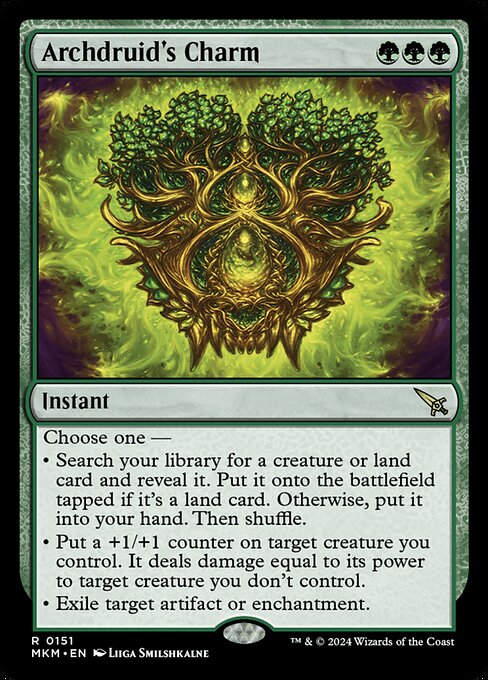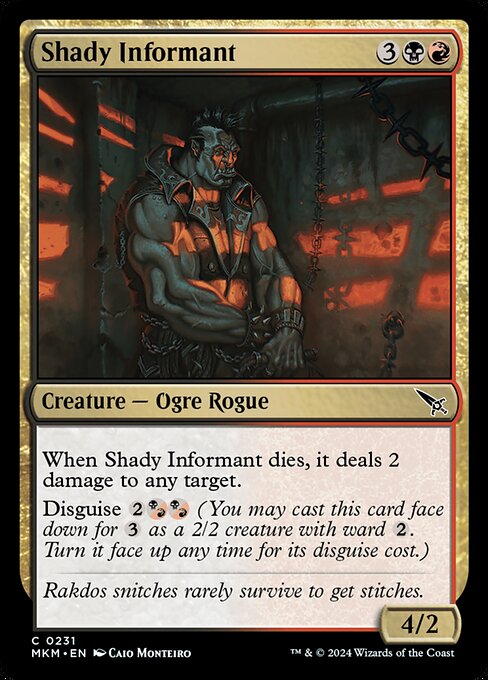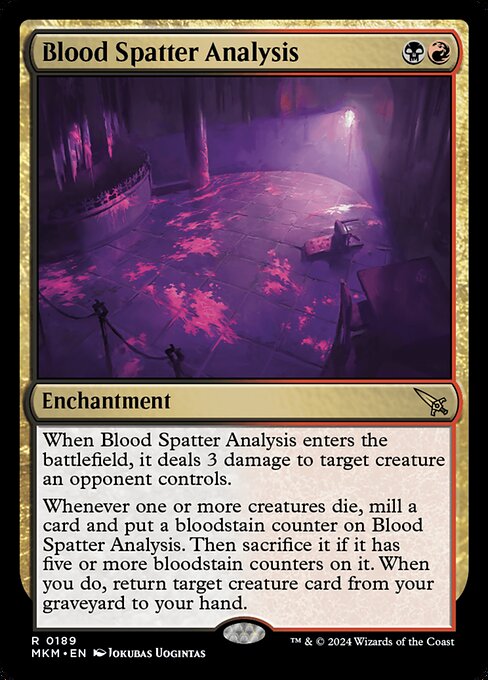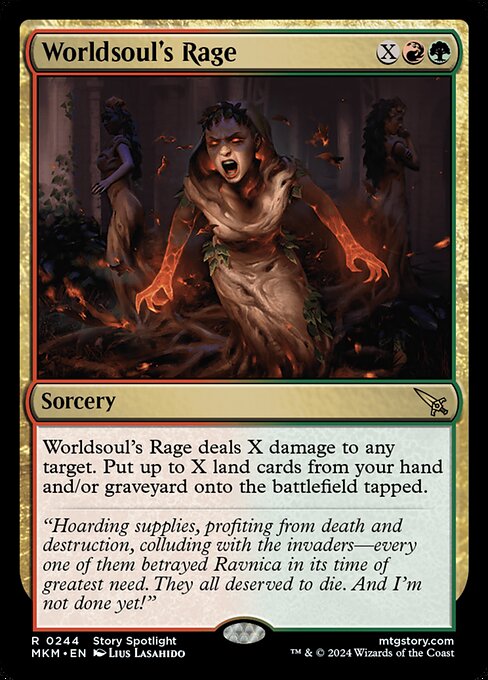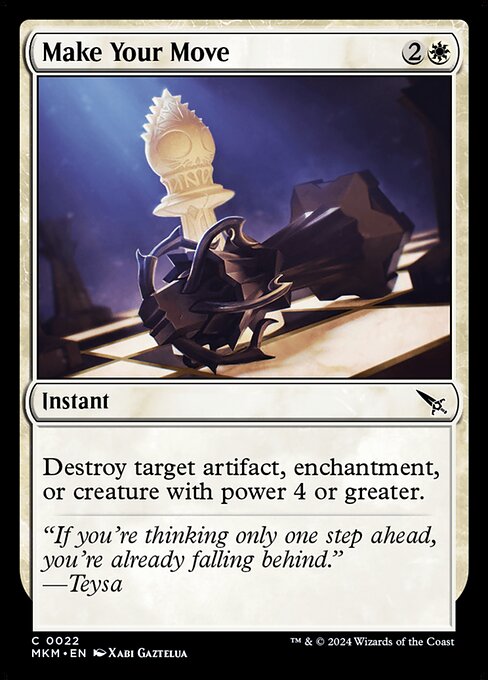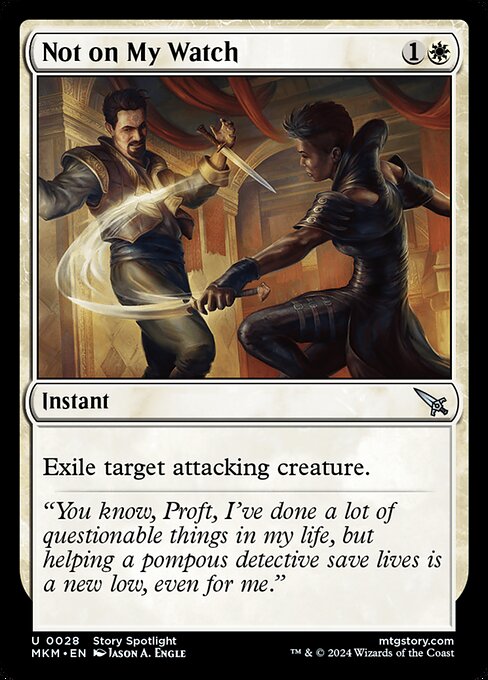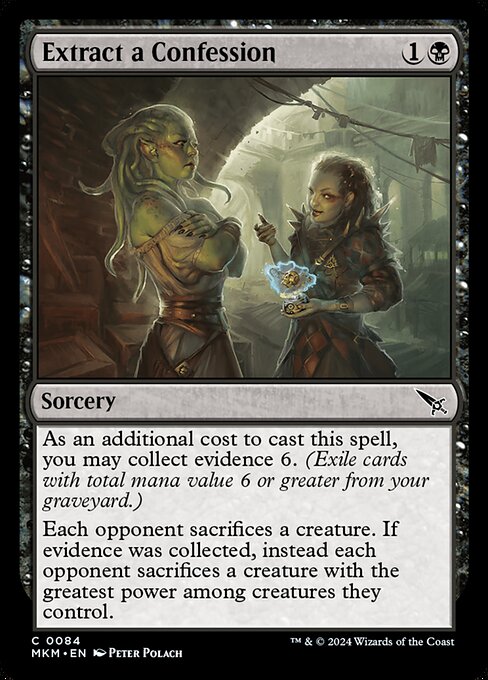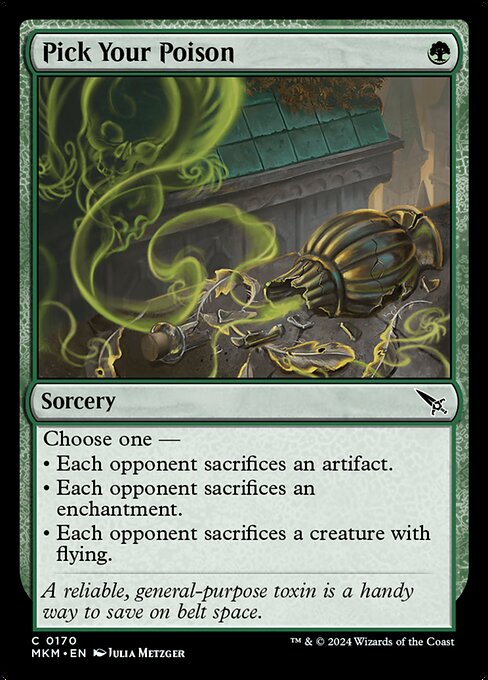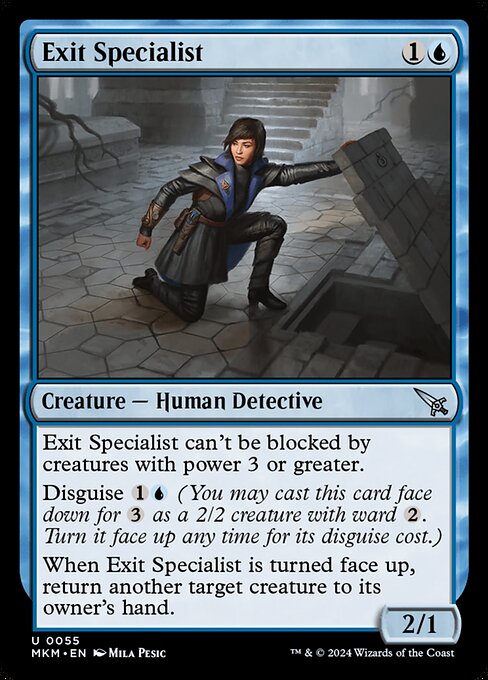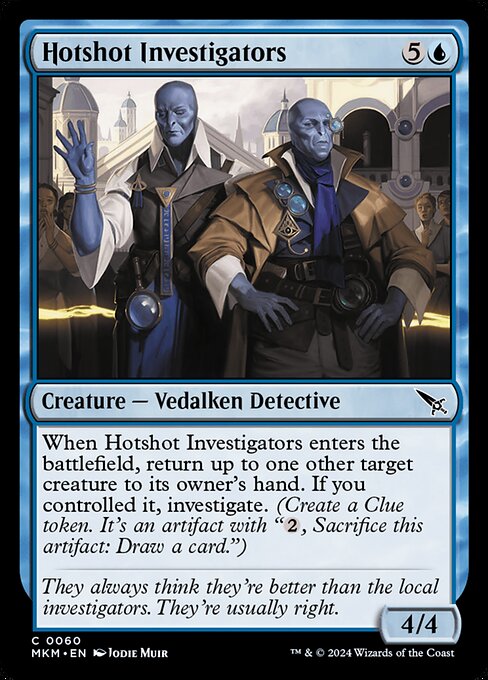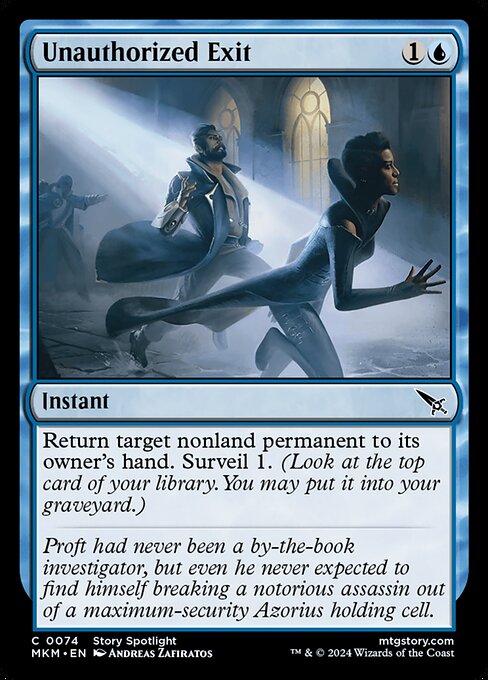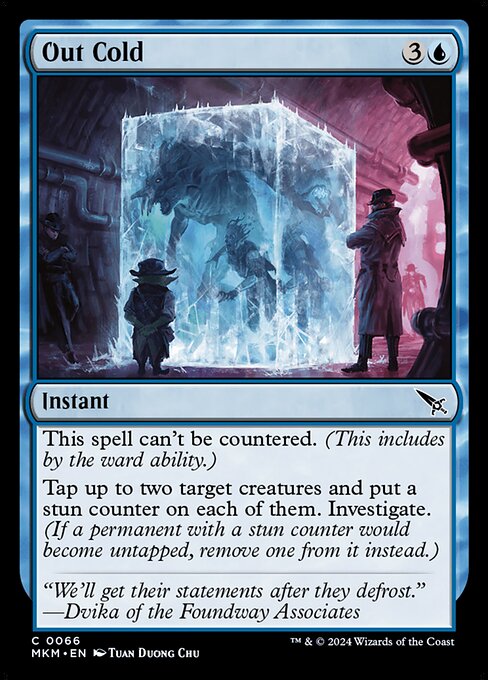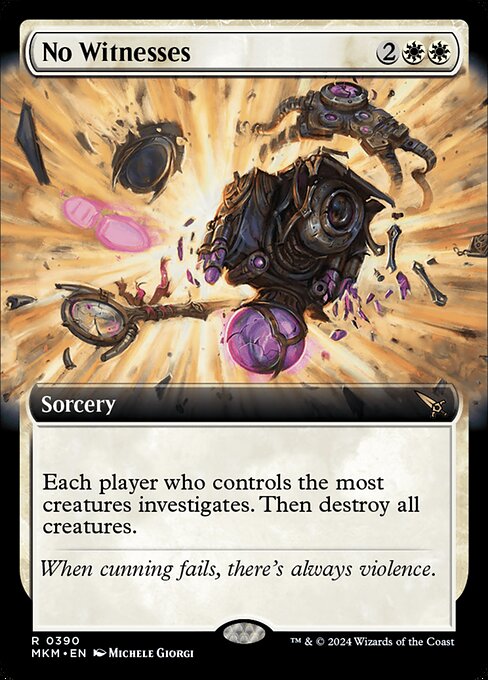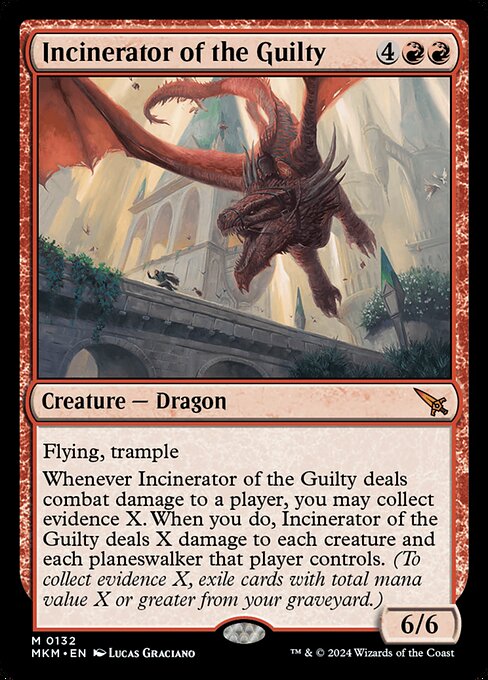Table of Contents
The new Limited season is soon upon us and this means one thing for me – time to look at how does the removal align with the creatures. Murders at Karlov Manor (MKM) is a set designed with its main mechanic in mind: Disguise.
A variant of Morph, you can play a Disguise creature face down for 3 mana and it becomes a 2/2 creature. But unlike Morph, which just produced a vanilla creature, Disguised creatures have Ward 2. This is a great idea from the design team. Adding Ward 2 means that you can put a reasonably costed removal into the set because even a 1 mana removal spell will cost 3 to kill a Disguised creature. In turn, this means that you can print early drops without a problem.
This avoids issues like Khans of Tarkir (KTK) had where presence of Morphs limited the design space. There was not much cheap removal, it was often over-costed and even then, a 2 mana version of Dead Weight was a good card as it could kill Morphs, while in some sets Dead Weight at one mana is not strong enough. This also meant that in Khans there were few early drops, only 27 creatures at common and uncommon in KTK cost 2 or less mana. That number is 45 in MKM.
So, how does removal look like in the upcoming set? As in my previous guides, I will look at 4 categories of removal:
- Unconditional Removal
- Conditional Removal – Damage
- Conditional Removal – Other
- Tempo Removal
- Sweepers
Unconditional Removal
Unconditional removal deals with basically anything your opponents can throw at you. Small, large, evasive or not – unconditional removal can handle it. But this usually comes at a cost. Unconditional removal spells either cost more mana or require you to pay an additional non-mana cost, like sacrificing a creature.
Traditionally, this type of spells is focused in Black and White, with some spells also appearing in Blue. But MKM being set on a guild-ridden plane of Ravnica has some interesting breaks from that rule in multicolor slots.
But let’s start with Black and we have 2 unconditional removal spells.
What better spell to put into a murder mystery set than Murder itself? Cheap at 3 mana, flexible at instant speed – hard to get a better kill spell at common. Murder has been reprinted multiple times and was good to great every time. Last printing was in Streets of New Capenna, where it was the 2nd best Black common, but Black in general was not great in this set so Murder suffered in consequence. For this card to be great, heavily Black decks need to be good. 2 black mana pips in the cost are a limiting factor – being able to use all range of the card is essential and in decks light on Swamps, you will have Murder frequently stranded in your hand. Remember, even with 9 sources of black mana in your deck, you will be only able to cast Murder on turn 3 in 75% of the games. You will only be able to cast it reliably (93% of the time) on turn 5 – something to keep in mind while building your mana bases.
Undercity Eliminator is a removal on a stick. And a reasonably statted 3/3 stick. It will exile any creature opponent controls on entering the battlefield (ETB) if you pay the extra cost. But the cost is real. You have to sacrifice either a creature or an artifact. In order for Eliminator to be good, you will need to have expendable fodder for it. The easiest way to do it is by sacrificing a Clue token from one of the dominant mechanics of the set: Investigate. Issue here is that Black is not the color that Investigates a lot, so if you want to get fodder, you will need to make sure you get it from the other side of your color pair. If you do – you got yourself a premier uncommon. But if you have to regularly sacrifice a 2/2 creature to activate it – you will be disappointed.
White also got 2 unconditional removal spells. Makeshift Binding looks premium. An Oblivion Ring-like effect at common and you get 2 life for it? Of course the drawback of Enchantment based removal is a potential of the exile creature to come back at some stage. But looking at the spoiler, there is not that much enchantment removal running around and most of it is on realistically sideboard grade cards, so at least in best-of-1 your Bindings should be relatively safe.
Unyielding Gatekeeper looks great. Early in the game it is a 3/2 beater for 2 mana. As the game continues you can use it to downgrade opponent’s best bomb into a 2/2 or blink one of your own creatures for value or protection. Lots of flexibility at a cheap card is something you want to see.
Blue unconditional removal was usually, for the lack of a better word, bad. Clunky tap auras, costing either 4 mana or being double-pipped were not good enough. They could be wrecked not only by Enchantment removal, but also by some sort of untap trick, and if creature had activated abilities that don’t need tapping, static abilities or able to trigger something – Charmed Sleeps of this world were useless.
However, Dramatic Accusation looks very different. Cheaper than usual and easier to cast, it gives you the option to shuffle the card back into the owners library. Yes, they can draw it again, but a possibility of having to deal with something is much better than having to deal with it now and here. It looks like a vast improvement on any common blue removal Aura.
Golgari gets some rare removal spell. Assassin's Trophy is a reprint with constructed credentials, but in Limited, a 2 mana deal with all removal spell is a great addition to any deck you are playing and late in the game, giving opponent an extra land to cast doesn’t seem like a large drawback. Instant speed on it means it will lead to many blowouts.
Talking about blowouts, Urgent Necropsy is also capable of those. Killing a creature and an artifact or a creature and an enchantment at instant speed can be devastating – imagine killing opponents biggest creature and the Makeshift Binding to get back one creature of your own in combat – the math will definitely change. The difficulty with this card is the extra cost. You need to exile a lot of cards to get enough mana value for this card. In decks that run it split cards (their mana value is the sum of both spells) and Topiary Panther are your best friends.
Kill a thing and sometimes boos your own creature for 3 mana? I am in. The limitations are being able to play it – but if RB decks are playable, which they often are, you will be happy to play it. Just don’t go out of your way to enable the second mode on the card, this is just a cherry on top of a really good spell.
Stealing opponent’s creature is often underestimated by beginner players, but don’t be fooled. It is much better than just killing it. You lower their board presence while increasing yours. Coerced to Kill is a less aggressive version of the effect, as your new creature will be a humble 1/1 with Deathtouch. But you can look for targets that come with more than just power and toughness – it will retain any activated abilities, counters etc, so you can still get some value from it.
This card looks very interesting. It exiles a creature and it ramps you from 4 to 6 mana potentially while fixing your mana. If there is a 5 color green archetype – this will be a great card there. If there is not – Selesnya gets a great removal spell that can deal with all sorts of permanents (not only creatures) all for themselves.
The only Planeswalker in the set – looks like a card that is powerful but not broken in limited and offers some interesting mini-synergies. But one part of its range is exiling the best creature opponent has at the cost of some loyalty and (hopefully) the worst creature you control.
Conditional Removal – Damage
Most prevalent type of conditional removal deals damage to opposing creature – either as straight damage or, mainly in case of Black spells, as a -X/-X modification to their stats. Damage based removal’s power in the format will depend very much on the toughness statistics of the important targets. Since before the release we don’t know what the most prevalent targets would be – we can only look at the toughness of all creatures and try to conclude from that. In order to get some baseline for further speculation, we can compare the MKM to all the other recent sets.

MKM has an average fraction of 1 toughness at common, but a relatively high of 2 toughness creatures, most likely linked to the presence of the Disguised creatures, which are often going to be played as a 2/2. With that in mind, 3 toughness, especially when accompanied by power 2 or higher, should be avoided. Too many creatures like this would make playing Disguise problematic as your morphs are invalidated by a single blocker and stop you from attacking. This is partially confirmed when you look at the 3 toughness. Only Innistrad: Midnight Hunt had such a low fraction of 3 toughness creatures, and if you remember, that set was characterised by the 2/2 Decayed zombies mechanic, again meaning X/3 statline could be problematic.
But MKM, unlike MID, has a large fraction of high toughness creatures. 30% of common creatures in the set have toughness 4 or greater – that is the most in the last few years. Bigger creatures should cost more, so their presence will not interfere with Disguise as by the time they hit the board you should be able to flip them face up. In fact, half of those creatures have disguise themselves. This shows us a picture: cheap removal for smaller creatures is useful, but keep in mind that apart from that , you might need to be deal with larger toughness creatures.
Damage-based removal is the domain of Red, but Black spells frequently get access to some -X/-X spells, while Green and White often have spells that deal damage depending on the creatures you have on board – either as fight and bite spells, where one of your creatures deals or trades damage with another, or as spells that deal damage according to the number of creatures you control.
In MKM Red has a wide berth of damage dealing spells.
Starting with the iconic and elegant little brother of Lightning Bolt. Shock does 2 damage to any target – as simple as. But putting Shock in a set with morph-like mechanic was no easy feat from the design team. But the addition of Ward 2 to the Disguised creatures means that to Shock them, you need to spend 2 mana – a tougher deal than a 1 mana bargain value you would get from Shock in sets like KTK. Flexibility of the card, ability to go face and kill one of the many naturally small creatures means Shock will be most likely a solid playable and a tool that will let slower decks survive to stages of the game where they are favoured.
Galvanize looks like a premium common removal. For a mere 2 mana it deals with ~70% creatures at common, but if you are able to activate the additional ability, say, by sacrifice one of the omnipresent Clues, you get much more. It will turn into a 4 mana spell then, but deal 5 damage, draw a card is a bargain for that price. But not every deck will be able to regularly capitalise on this upside – so keep in mind during the draft that Galvanize‘s power will in large part depend on if it fits your particular deck or not and adjust the pick order of the card accordingly.
Cases are a sweet looking new mechanic. Somewhat similar to Sagas – you have three chapters, but instead of steady progression turn after turn you get initial reward, then a task to complete, and finally a reward for solving the case.
Case of the Burning Masks looks like one of the better ones., because the initial part of it is already a good ability. Dealing 3 damage to a creature for 3 mana at sorcery speed is a bit overpriced, but if you are playing an aggressive deck, triggering the second part of the card will be relatively easy – all you need to do is attack with 2 creatures on the turn you cast the spell and if you connect with them or even if they get blocked, you will solve the case. The reward is substantial: you get to select a card from top 3 of your deck and get to cast it that turn. Plus, that extra ability makes the first part of the case well worth it.
Cornered Crook looks like a great card in the right deck. You will need some sacrifice fodder for it, but a 5/4 creature for 5 mana is not a terrible deal, and if it manages to kill something on ETB – that is a great deal. Very much like Galvanize and not for the last time, red removal will need some help to become active – and this is something to keep in mind while drafting red in this set – its cards will be very much dependent on the synergistic interactions with other cards in your deck, something you should keep in mind both when you draft and play – you might want to wait with sacrificing that last clue you have on board if you have the Crook or Galvanize still in your deck – if you can afford to do so of course.
Suspicious Detonation on its face value looks clunky. 5 mana at sorcery speed to deal 4 damage is below rate. The uncounterability is a nice addition but doesn’t cover the lower power – especially since you don’t want to use a 5 mana spell to kill a disguised creature. But – if you sacrificed an Artifact this spell costs only 2 mana which is a bargain, and this makes it a 3rd red damage based spells that gets better if you can crack a clue on the turn you cast it. This makes me think that UR archetype that centers around sacrificing artifacts as a theme will be more suited to utilize those spells more efficiently than other red color pairs – hard to predict exactly how it will play out, but it might well be that non-Izzet red deck might run into trouble of getting the upside of red removal as frequently as Izzet, color pair that actively wants to be sacrificing artifacts anyway.
Torch the Witness is an interesting take on Fireball. Dealing twice the damage means that for 4 mana it can take out a 6/6 – which is efficient enough. That means it scales very well with the game and will be as close to an unconditional removal in the set as you can get in Red. And my guess is, it will get you a Clue a good 90% of the time – efficient 1-for-1 removal that easily can become a 2-for-1.
4 mana removal spell that gives -4/-4 to a creature is well below rate. We’ve had access to this type of an effect for 2 mana in recent sets. But the extra drain effect on it could tilt the scales in Enervation’s favour. If you can reliably trigger the ability once or twice, it is starting to look better and better. So this, for me, suggests that you will want to have some effects in your deck that are capable to get those creature cards from your graveyard – either by Collecting Evidence or by recurring cards from your graveyard. Remains to be seen if the card is good enough to stand on its own, but my guess would be that you’d want to have at least some synergies to go along with the Enervation to feel comfortably playing it.
Slice from the Shadows looks quite clunky. Even though the “impossible to counter” clause looks like something that would help you with disguised creatures, you will still have to pay 3 mana to get rid of one. As is, the card looks to me less like a removal, and more like a combat trick – giving your opponent’s creature -1/-1 in the middle of the combat to change the combat math costs you only 2 mana which is acceptable. As such I see the place for this card in some creature-heavy black decks if such exist.
This White damage based removal has “go wide” written all over it. The more creatures you control, the better it becomes, the easier to solve the case and the better the bonus for solving it becomes. If a go wide aggro deck is good in this format, Case of the Gateway Express will be a staple in that deck. At the same time, not every other deck will want to have it so aggro decks gain a tool that few others will be interested in.
In a set centred around murders, front stabbing is not an option. It makes sense then that green removal will favor bite spells, where your creature attacks opposing creature, rather than fight spells, where opposing creatures exchange blows. All three green removal spells based on damage are bites. Starting with an aptly named Bite Down on Crime. 4 mana at sorcery speed doesn’t seem like a good deal, even when taking the power bonus into account. But the potential discount that may play to some of your other synergies? That looks interesting already. It will be good against more midrange decks that rely on one large blocker to stabilise, but will look rather silly if your opponent is trying to swarm the board with 1/1s. So card’s power will be very much dependant on what is the dominant strategy in the format.
Hard-Hitting Question on the other hand is a very cheap spell. It is not long ago we had a significantly worse fight spell for the same price. 1 mana is huge for this type of an effect. You will be able to cast a creature and a removal spell at the same time, meaning you will be able to increase pressure on your opponent two-fold. I can see this being a backbreaking play on turn 4-5, swinging the game’s momentum in the direction of the player who does ask the Hard-Hitting Question.
Archdruid's Charm is a rare and a powerful one at that. Most of its power lies in the flexibility. Choice of ramp, removal, tutor or Naturalize effect is perhaps more potent in constructed formats, but still looks decent in a limited environment. If you can cast it, that is. GGG cost is hard to pay. Remember that in a deck with 9 green sources you will only be able to reliably cast this card on turn 7 or so. If you are planning to have access to it earlier, be prepared to put 11-12 green sources or even more.
This card needs little interaction. Card that was, arguably, the most famous topdeck ever, Lightning Helix has a firm place in Magic’s history. And is still very powerful. Put 2 classic Alpha spells on the same card for a good price and you have something. Cheap, powerful – the only limitation here is you have to be Boros in order to play it. But you will be very happy to do so then.
Rakdos gets a nice collection of damage-based removal. Starting with the Disguise common in Shady Informant. Casting it as a Disguise creature and flipping it face up is a whole 7 mana, but it is relatively easy to engineer it into a 2-for-1, so if Rakdos decks are interested in an attrition game, planning on running opponents out of resources – that shouldn’t be a problem. And in that case you will not suffer too much from the tempo loss investing 7 mana into a 4/2 creature.
Blood Spatter Analysis is an interesting card. 2 mana, sorcery speed, deal 3 damage is ok, but not amazing, especially if you have a slightly restrictive cost. But, over a long game, you will build towards it drawing you a card, and not just any card – a creature spell. Should be good in any BR deck, but I think will be at its best in more grindy mid-range or even control shells.
Rune-Brand Juggler looks interesting. When it ETBs you can turn one of your own creatures into a suspect, making it hard to block but losing the ability to block itself. You can use that ability offensively, by giving Menace to something that will be problematic to your opponent. But you can also make a redundant creature into a suspect with the purpose of sacrificing it later. -5/-5 is quite a lot. Furthermore, if you can make more suspects, Juggler can turn your disposable 1/1s into removal spells later in the game. Hard to evaluate the power of this card before I get to play with it, but at least I can see potential of the card if what it does and what Rakdos decks want to do align well.
Gruul removal and/or finisher spell. It does something very powerful in the late game, but doesn’t do much to help you getting to this late stage. 4 mana to kill a 2/2 creature is a lot. So make sure that your deck can go into very long games and potentially can put lands into graveyard easily if you are interested in playing Worldsoul's Rage. My prediction is, the card won’t be great but I reserve the possibility of being wrong here.
Conditional Removal – Other
Cards like Make Your Move are usually a sideboard option for Best-of-3 games. But sometimes they become maindeck material, Destroy Evil is a great example from last years. Make Your Move costing 3 mana means it is less likely to become a staple of the format, but there is a substantial number of larger creatures, so perhaps it will be good enough to see maindeck play. Still, given some go-wide strategies based on small creatures, you want to be careful with it and before you start putting it in your decks, think if having this card would have been beneficial or disastrous in each game. If you notice that the answer is frequently “beneficial” – you may start maindecking it.
Not on My Watch is a classic control card. One thing you want to make sure of – don’t put it into your aggressive shells. In those decks you want to be the beatdown – as since you are beating down, opponent should not. So Not on My Watch will be likely rotting in your hand. Exception to this rule are aggro decks that rely on flyers to get the job done. Since you and opponent are attacking each other on non-overlapping levels, cards like Not on My Watch can be beneficial in helping you to win the race despite flying creatures having traditionally smaller size than ground-based ones.
Case of the Gorgon's Kiss is a very interesting card. Creates a whole minigame and offers multiple ways of solving the case. And the case looks worth solving – 4/4 Lifelink Deathtoucher is no mean feat, especially for only 1 mana. It will often require a double block to be dealt with and no double blocking of a Deathtoucher is beneficial. Still though, a sorcery speed removal of a creature that was dealt damage is not that impactful but you will probably frequently cast it for no value upfront, focusing on the main prize – transforming it into the creature, either by trades, or by self mill/discard etc.
For those of you who played with Inga Rune-Eyes – just having this card on board may create an interesting minigame that will force opponents to skip some blocks and make combat awkward. One thing to keep in mind is recognising when your opponent might have it. Be vigilant of any weird looking attacks!
Long goodbye looks like a great card. Kills a large chunk of creatures in the format for cheap. At the same time, deals with disguised ones without having to worry about Ward. An autoinclude in any Black decks.
Extract a Confession looks like a very interesting option for any control decks. For the card to be truly good, you need to want the basic version in your deck – which would be at its best in a controlling shell, where removing a 2-drop on turn 2 is something you are interested in as you are unlikely to want to push early damage yourself. Later in the game it turns into a removal of the biggest thing on board, which traditionally was a very good effect. Nice thing here is that against go-wide decks you don’t need to bother with Collecting Evidence and just use it to limit opponent’s board.
A classic Green conditional removal. Usually at a D-tier power level, and relegated to sideboard card role in Best-of-3.
Killing a tapped creature at sorcery speed is not a great ability, as it means that creature managed to successfully attack you. But tagged to a 6 mana powerful spell, there is some hope for it. You will have to make sure that Pull will be your finisher and can really swing the game around out of nowhere. If you fulfil that requirement – you are in the clear. But be warned, it probably looks easier in theory than in practice.
Agrus Kos claims he is a Spirit of Justice but in what universe is this card fair? A practically 4/4 for 4 mana that will exile a creature if left unchecked for a turn. This looks like a great card and with so much removal focusing on dealing 4 damage, might be trickier to kill than you think. And if opponent already had a suspect on board (be it with your help on of their own making), it ETBs as a straight down removal spell.
Tempo Removal
Tempo removal doesn’t deal with its targets permanently, but if you play tempo decks, you don’t mind. Time is what you are interested in and buying it is worth a card. Tempo decks usually attack opponent on a different level, for example by using flying creatures, and buying a turn or two by tapping or bouncing something will increase your chances of winning. Tempo removal is focused in Blue but occasionally can be seen in White as well.
Exit Specialist is a mediocre 2-drop with some potential evasion ability that will make it more likely that it will trade with something. But played as a Disrupt creature it can turn into a Man-o-War. It still doesn’t look convincing for me, but if blue is aggressive enough, it may be a solid option for some decks. Especially being a Detective might make some space for this creature in WU decks.
Starsky and Hutch of Ravnica. 6 mana for a 4/4 is a lot, but a flexible bounce ability that can give you that little extra if you bounce your own thing is at least interesting. If there are decks that play a long-enough game that are interested in recouping their ETB effects, and don’t mind an overpriced bounce spell on a stick, well, you know where to find them – you should be able to pick a copy in most drafts.
Cheap bounce spell with a minor upside is something tempo decks want to play – put 1 or 2 in your deck if tempo is your plan. Card selection is among the better ways of augmenting those spells because it not only gives you more time to implement your plan but potentially gives you access to better tools in order to do so.
Sudden Setback might look like a terrible spell. 4 mana to do what? Put some creature or spell on top of the opponent’s library? They will just draw it and replay it. In reality, spells like this are among best Blue has to offer in recent years and are often underappreciated. You force your opponent to recast their spell, thus wasting their mana. You also force them to redraw it – costing them cards. Sometimes, the opponent will just not be able to keep the card on top of their library turning it into a straight removal spell in a color that technically should not have access to one. This is a powerful tool for any blue deck and I expect it to be among better blue uncommons.
Out Cold allows you to stun a couple of opponent creatures. Stunning is markedly different from bouncing something as you usually gain a bit more time, but opponent doesn’t lose any mana. We have seen this type of an effect in Blue many times, but it often falls short. This one though looks to me as a potentially good card. For one, this format looks like a slightly slower one. Secondly, generating a clue is a nice addition, and something we rarely see on the stun spells.
Lost in the Maze is a tempo equivalent of a sweeper. You can use this spell to clear the path for your attacks, but you a lot of time and save your own creature from any removal. Looks fun, flexible and powerful but not broken – I will be happy to put it in my decks.
Sweepers
Almost there, but we just can’t ignore the last category. Perhaps the most dreaded one in Limited – Sweepers. Spells that can deal with whole boards and often invalidate anything that happened before them, and MKM has a good selection of powerful sweepers in multiple color combinations.
A straight 4 mana Wrath of God effect that may give someone a Clue token. Which is hardly a consolation after you lost all your creatures. Card is definitely powerful, but the question remains – is there a shell for it? If White decks want to attack, so will there be a good control deck in any white combination that will be happy to play a different plan? If there is one – don’t hesitate to put this card in it.
One mana more, but in a color combination that is more likely to want a Wrath effect. If you Collect Evidence, you may exile any type of card from opponent’s graveyard. Resist the temptation of picking a basic land – you will only make opponent draw more spells. However, there is a potential good target in the format – if your opponent played Slime Against Humanity, they are very likely to have multiple copies. Don’t hesitate then to get rid of them!
Big Mythic. This card asks your opponent a simple question – do you have a removal spell? If you don’t, – I probably won. Collecting Evidence to Plague Wind the opponent is extremely powerful, and having that on top of a massive flying stick is even better. This will be a groan test of the format.
Ill-Timed Explosion is another very interesting card, mixing up a sweeper with Faithless Looting. You can adjust the sizing of the effect to make sure you are the one who gets the most beneficial outcome. If push comes to shove, you can even just blast the whole board.
Remember, split cards have a combined mana value of both cards – making them deal 6 to 8 damage in this set. The most interesting of the sweepers in MKM that will reward good planning and deckbuilding – this is a card I very much looking forward to play with, but not necessarily looking to play against it though!
Conclusion
This brings us to the end of the removal review – I hope you enjoyed it and will find it useful in the preparations for the new format!
Premium >
Enjoy our content? Wish to support our work? Join our Premium community, get access to exclusive content, remove all advertisements, and more!
- No ads: Browse the entire website ad-free, both display and video.
- Exclusive Content: Instant access to all exclusive articles only for Premium members, at your fingertips.
- Support: All your contributions get directly reinvested into the website to increase your viewing experience!
- Discord: Join our Discord server, claim your Premium role and gain access to exclusive channels where you can learn in real time!
- Special offer: For a limited time, use coupon code L95WR9JOWV to get 50% off the Annual plan!


























